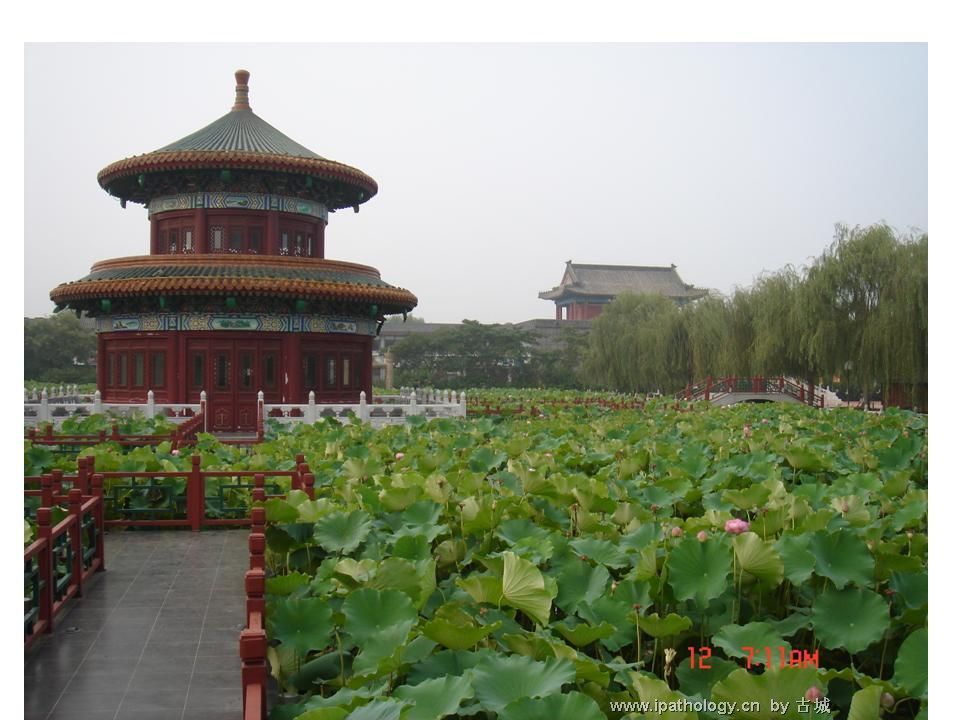| 图片: | |
|---|---|
| 名称: | |
| 描述: | |
- Breast lobular lesions and stains ( cqz 7)
| 以下是引用abin在2008-12-21 1:31:00的发言:
我理解的分级: ALH-LCIS:明确的小叶病变,一个TDLU内一半以上的腺泡被累及(充满且扩张,中央无腔隙),为LCIS。不足一半的腺泡被累及,仅部分充满腺泡,无或仅有轻度扩张,为ALH。LCIS不分级。 LIN 1,2,3级(Bratthauer GL, Tavassoli FA, 2002):1级相当于ALH,2级相当于LCIS,3级:增殖的细胞完全充满并使末梢导管最大限度地扩张到几乎相互融合,或增殖的细胞有明显异型性(多形细胞型),或增殖的细胞完全由印戒细胞组成(印戒细胞型)。多形细胞型和印戒细胞型可出现坏死和钙化,这两型不要求腺泡明显扩张。 |
Agree with Abin. The most common differential diagnostic dilemma is the distinction of LCIS from ALH. There are many authories who gave the different criteria. It is difficult to handle it. It is more difficult than in distiction ADH from DCIS. You need to get some sense from your own experience and also consider the patients' situation, core biopsy or excisional biopsy et al.
In fact I like LIN system. It is more easy to make dx for pathologists. LIN1 and 3 are easy. If you are not sure, than call LIN2. I learned LIN when I worked at AFIP. But Magee does not it. Tavassoli FA once was Chair, Gyn/breast dept at AFIP. This is why LIN is used at AFIP. Tavassoli is in Yale. She still give talk in national meeting using LIN system. Basically most hospitals still use ALH-LCIS system. Importance is that your physicans know what you are talking about.
LIN1 should ALH
LIN3 should be LCIS
LIN 2 can be alh or lcis.
it seems that I only discuss cases with few good pathologists in China. It is fine for me. Ha, ha.
-
本帖最后由 于 2008-12-21 21:53:00 编辑
翻译43楼:
同意abin。最常见的鉴别诊断困境是区分LCIS与ALH。有许多作者有不同的标准。很难把握。这种区分比ADH与DCIS的区分更难。你需要从自己的实践经验中获得某种感觉,也要考虑患者的具体情况、标本情况如粗针穿刺活检或切除活检等.
实际上我喜欢LIN分级系统,它更易于病理学家作出诊断。LIN 1级和3级容易掌握。如果不太明确,归入LIN 2级。我在AFIP工作时学习了LIN。但是Magee不用。Tavassoli FA 曾经是AFIP的妇科/乳腺部门的主席(主任),这就是为什么AFIP使用LIN的原因。Tavassoli 现在在Yale,在美国讲课时她仍然作用LIN系统。大多数医院基本上仍使用ALH-LCIS系统。重要的是让临床医生知道你在说什么。
LIN1应当为ALH
LIN3应当为LCIS
LIN 2可能是ALH或LCIS
我似乎只是和中国少数好病理医生在讨论。我觉得这样也不错,哈哈。

- 取法乎上,而得乎中。
-
本帖最后由 于 2008-12-21 22:15:00 编辑
Put here another case.
45 y female for bilateral breast reduction (about 900 grams for each side).
One section as the photo.
Our rule for breast reduction age 40 or above:
10 sections are submitted for microscopic examination for each side.
What do you think? How will you deal with this case?

名称:图1
描述:图1
45 y female for bilateral breast reduction:
Breast reduction is a surgery procedure, not a disease. Some women's breasts are large. They ask the surgeons to take out some of normal breast tissue to make their breast smaller for purpose of beauty. it is a kind of plastic or cosmetic surgery. Breast reduction is opposite of breast augmentation.
-
本帖最后由 于 2008-12-24 19:40:00 编辑
Dual stain (p120 and e-cad) for above case
Clearly it is ALH lesion. The H&E morphology is very minimal. It is very easy to be missed for every one.
ALH is the risk factor of cancers. Women can have more close follow up it we can diagnose the lesion, or excisional biopsy for women with core biopsy.
Can you say you never miss the samll lesions? This is why stains are important sometimes. I remember that we once had argument if stains are needed for lobular lesions in this web.
上述HE图片的IHC双标(p120 and e-cad)。
这是明确的ALH。HE形态学很微小。每个人都容易漏诊。
ALH是进展为浸润性乳腺癌的危险因素。如果诊断了这个病变,患者需要更密切随访,或粗针穿刺活检后作切除活检。你能说从未漏诊过这种微小病变?这就是为什么有时IHC非常重要的原因。记得我们曾经在这个网站上争论过小叶病变是否需要IHC。
____abin译
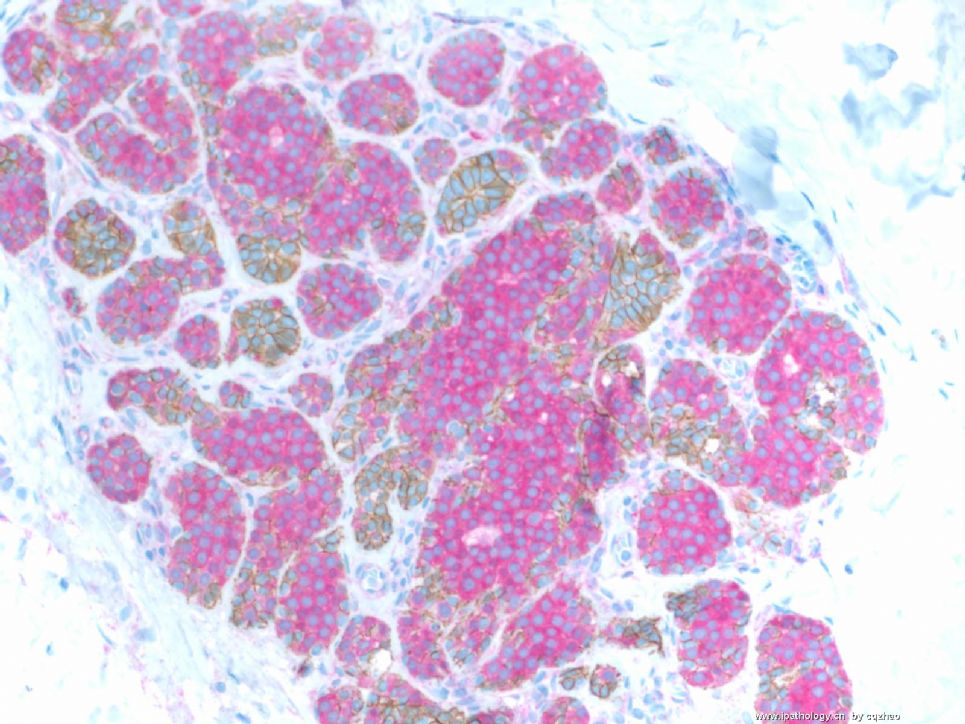
名称:图1
描述:图1
-
本帖最后由 于 2008-12-24 19:43:00 编辑
I am doing breast core biopsy service this week. Give you another example of very focal ALH from my today' s cases.
Just hope whoever read this topic from this web can think about the lesions in your practice. Do stains if you are not sure.
We should learn some priciple from the case study, but not only one case interpretation.
这周我做乳腺粗针穿刺活检。从我今天的病例中提供另一例非常局灶性的ALH。
希望看过这个主题贴的人在实际工作中能够考虑到这种病变,如果不确定,做免疫组化。
我们应该从病例学习中学到一些原则,而不只是一个病例解读。
____abin译
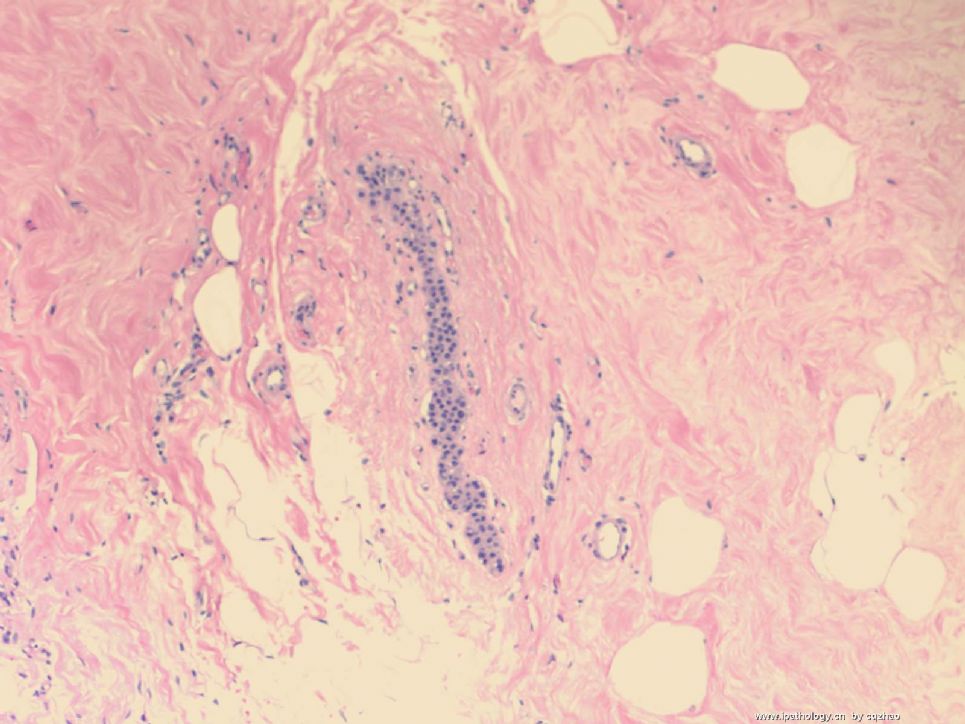
名称:图1
描述:图1
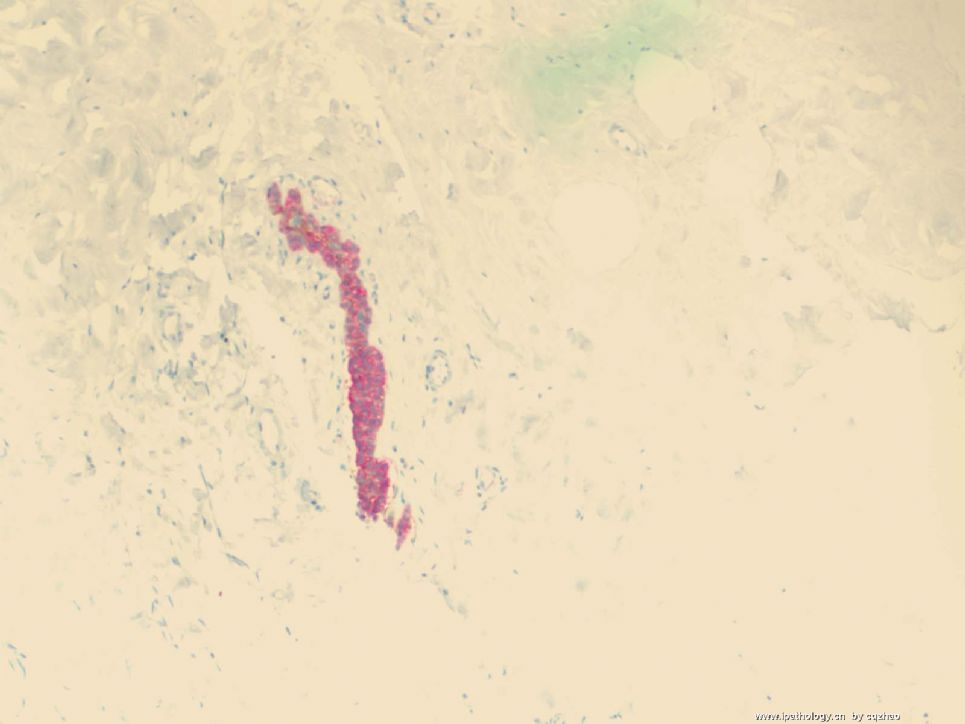
名称:图2
描述:图2
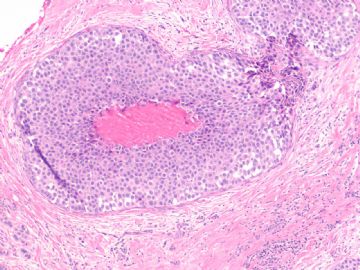
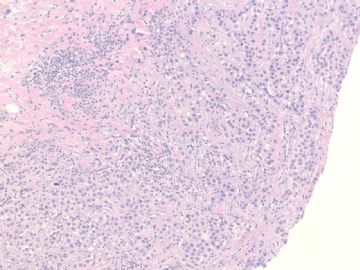
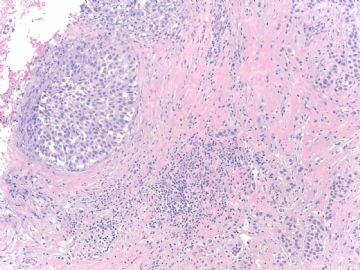
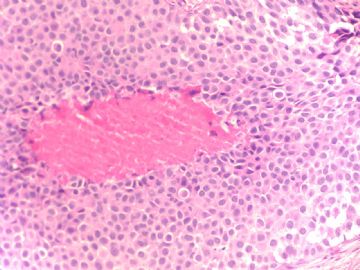
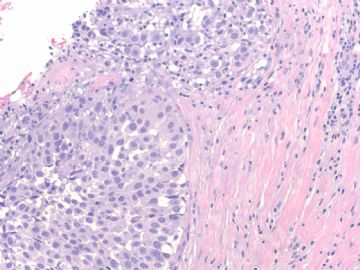
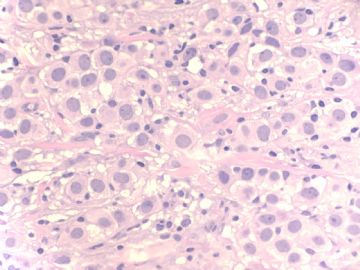
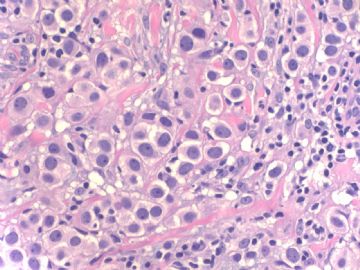
 浸润性导管癌
浸润性导管癌 

 不好意思,被误导了,看到第一眼,觉得没问题,不过总觉得赵老师不会出这么简单的问题吧,又看到小叶周围纤维胶原化,先想到腺病,疤痕样,所以想是硬化腺病。呵呵,现在明白了。思路还是没完全打开,看赵老师的帖子,要多动脑了。
不好意思,被误导了,看到第一眼,觉得没问题,不过总觉得赵老师不会出这么简单的问题吧,又看到小叶周围纤维胶原化,先想到腺病,疤痕样,所以想是硬化腺病。呵呵,现在明白了。思路还是没完全打开,看赵老师的帖子,要多动脑了。

